Reliable Power: Maintaining Balance
This is the second part in a series on electric grid reliability from SVEC’s wholesale energy provider, Old Dominion Electric Cooperative.
Now more than ever, maintaining electric reliability is critical — and balance is the answer.
Demand for power is rapidly increasing, driven by economic development, the electrification of cars, weather patterns and data centers that support AI — warehouses of computers that typically require large amounts of power for processing and cooling equipment.
At the same time, many power plants across our nation have been retired or are forecasted to retire early, largely because of environmental concerns and related interests that include development of renewable generation resources. The fact that the power industry currently lacks adequate replacement resources exacerbates the problem, as retirements are outpacing the addition of new generation and decreasing on demand or “always available” generation resources.
Meeting today’s electricity needs requires balancing traditional resources with weather-dependent renewable resources. Old Dominion Electric
CONTACT US
Mailing Address
180 Oakwood Drive, Rockingham, VA 22801
Phone Web
800-234-7832 • svec.coop Email svecpr@svec.coop
Local Pages Editor Preston Knight
Local Pages Designer Ashley Kreis
If you would like to unsubscribe from receiving the print edition of Cooperative Living, email svecpr@svec.coop with your home address.
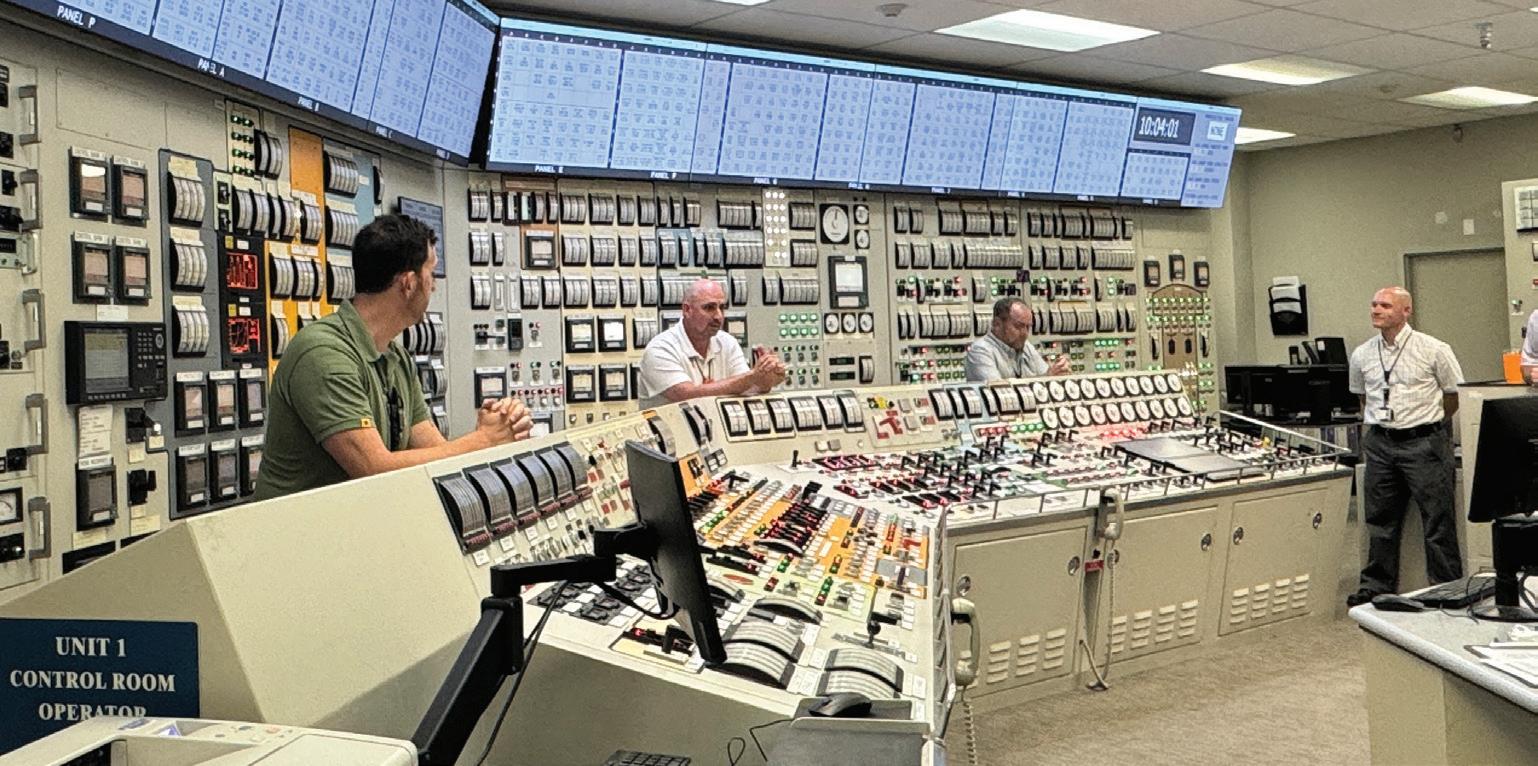
Cooperative believes in balancing real-world reliability with the reality of being responsive to changes in policy, regulations and energy needs.
Together with 10 other regional electric cooperatives, SVEC cooperatively owns ODEC, a not-forprofit wholesale electric generation and transmission provider. ODEC generates most of the power SVEC provides.
A BALANCED POWER MIX
To ensure reliable power, generation resources must be available on-demand. This is called “dispatchable” power or power that’s always ready to go. ODEC’s sources of dispatchable power generation include natural gas, nuclear and coal. These provide “always available” baseload power, ensuring a steady, continuous supply of energy regardless of weather conditions or time of day.
power as an important part of ODEC’s balanced energy mix. Compared to baseload power, intermittent power is not always available. In fact, it’s available only when conditions are right.
When it comes to reliability, not all energy is created equal. Swapping 1 MW of electricity from coal, nuclear or natural gas with 1 MW of electricity from wind or solar is not an even swap. They’re not equally reliable because they’re not equally available.
The types of generation in ODEC’s portfolio are each unique in their contributions toward providing the affordable, responsible and reliable power SVEC is committed to delivering.
When it comes to reliability, not all energy is created
equal.
Renewable energy sources, such as wind and solar, provide intermittent
“ODEC’s energy mix provides stability, made up of strength, affordability and balance, powering a reliable future for us and our members,” says Greg Rogers, SVEC’s president and CEO, and secretary and treasurer of the ODEC Board of Directors. “We are proud to have a voice in decisions that impact how we provide the electricity our members count on.” •
‘Eye-Opening’ and ‘Extraordinary’
National Co-op Youth Tour inspires four Valley students
by Lydia Weaver, Community Relations Specialist

One Monday in mid-June, four students from SVEC’s territory arrived at the nation’s capital to kick off an educational week of touring during the National Rural Electric Cooperative Association’s Youth Tour. Accompanied by two SVEC employee chaperones, community relations specialist Lydia Weaver and applications specialist Emily Reitz, these four students represented our co-op in a larger, statewide group, the Virginia, Maryland & Delaware Association of Electric Cooperatives.
Matilda Bunn of Rocktown High School, Emma Price of Luray High School, Mrigank Rout of Spotswood High School, and Aaron Villafranca of John Handley High School joined over 40 rising seniors from 10 other electric cooperatives in our tri-state area. Overall, more than 1,500 students from electric co-ops nationwide gathered to gain leadership experience and learn how legislation impacts rural communities.

Pictured, left to right, Aaron Villafranca, Matilda Bunn, Emma Price and Mrigank Rout.
Monday
Upon arriving in Washington, VMDAEC students participated in ice breakers, received a crash-course education in electric cooperatives and even got hands on with a STEM challenge to put their critical thinking skills to the test. After first-day shyness was quashed, the students departed for a guided tour of the Thomas Jefferson, Martin Luther King Jr. and Frankin Delano Roosevelt memorials.
“The FDR Memorial was my favorite,” Aaron says. “[Youth Tour] is an extraordinary experience.”
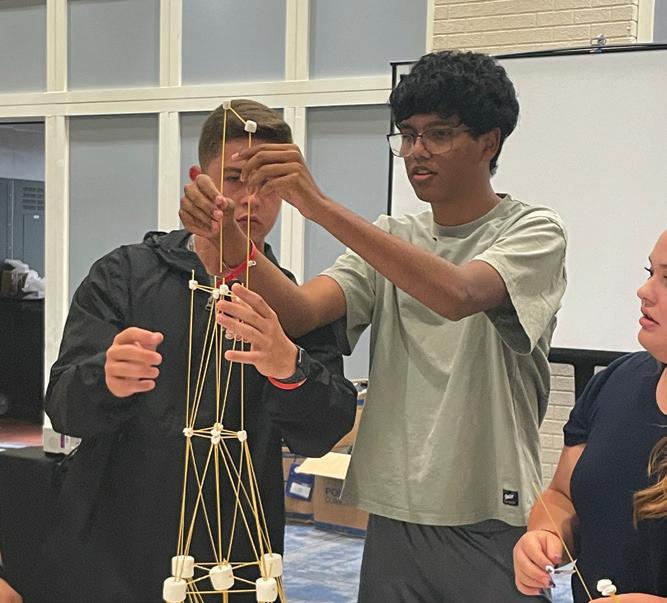
Tuesday
The first stop was Arlington National Cemetery. Student delegates listened to the tour given on a trolley through the grounds and observed the Changing of the Guard ceremony at the Tomb of the Unknown Soldier. After lunch, they made a quick stop at the White House for a group photo, followed by a visit to the Museum of Natural History that rounded off the afternoon.
In the evening, delegates attended a Washington Nationals baseball game. Mrigank, a self-declared Nationals fan, especially enjoyed the game because his friends from Spotswood’s baseball team were honored on the field for their recent state championship.




Wednesday
A mainstay of Youth Tour each year, Wednesday revolved around Capitol Hill. SVEC’s delegates visited 6th District Rep. Ben Cline’s office. They spoke to one of his legislative assistants, Doxey Loupassi, and learned about the workings of Congress firsthand. Our delegates asked lots of questions and heard about local issues that garner conversations at the federal level. Mrigank says meeting Loupassi was his favorite part of the Capitol visit.
“She was such a great person with so many good stories,” he says.
After the meeting, SVEC’s group toured the Capitol and sat in the House of Representative’s gallery to see where the action happens.
Dinner for the evening was on a Potomac River boat cruise, shared with other states’ delegates, including Texas, Indiana, Kentucky and Alabama. The excitement of meeting students from other states was compounded by the opportunity to swap pins. With different states and co-ops all sporting their own designs, every encounter was a chance to collect.
“It was a great time to meet new people from different states, and the view of the city from the water was incredible,” Emma says. “We had time to pin trade, dance and hang out with our new friends!”

Thursday
Visits to the National Air and Space Museum and the National Museum of African American History kicked off the day’s agenda. Exploring the latter was both moving and fitting for the day, as it was Juneteenth.
That evening, NRECA hosted a national event at the hotel. All participating states attended dinner and a Youth Day program. Students heard from Youth Tour alumni, NRECA leaders, and motivational speaker and author Mike Schlappi.
After pin-trading deals were made with as many different state delegates as they could manage, our students rode the Ferris wheel at National Harbor.

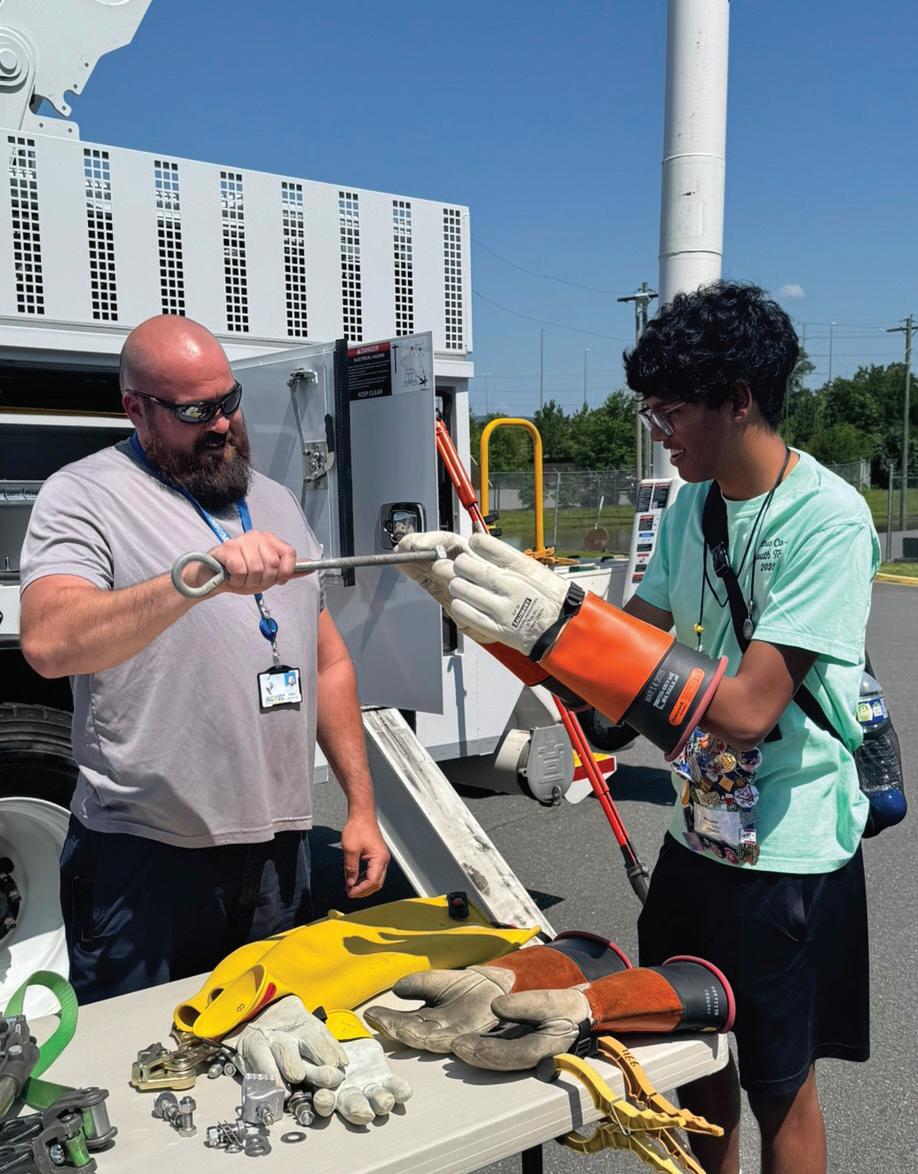
Friday
Students toured Northern Virginia Electric Cooperative, another co-op within VMDAEC. They visited many employees and departments, gaining a clearer understanding of the vast career opportunities an electric co-op can provide. From trying on lineworker’s gear to measuring with an engineer’s rangefinder, they heard a little bit of everything throughout the office and warehouse. Officially worn out from the busy week, SVEC’s students headed back to the Valley.
“It was the most fun week I have had in a long time,” Mrigank says. He adds that if you’re thinking about applying next year, “absolutely do it.” Youth Tour 2026 will be open to students who are juniors during the 2025-26 academic year.
“Be outgoing and take this opportunity to meet new people and make new memories,” Emma says. “Youth Tour was eye-opening for me and what is possible when you don’t let your fears stop you!” •

Something to Talk About
Auctioneers are crowd pleasers during county fair season
by Preston Knight, Communication Manager
Josh Puffenbarger tends to talk too much.
This isn’t a personality flaw or a critique. As an auctioneer, Puffenbarger must talk, and he must do it swiftly.
“People think we’re talking extremely fast,” he says, before leading into a rapid-fire point. “It seems like we’re talking fast, but the fact is we just never stop talking. So, if you never stop talking, are you talking that fast?”
To answer the rhetorical from an untrained ear’s perspective, yes, it sounds borderline comically speedy. But those among us who are not auctioneers admire it, nonetheless, and ’tis the season for that admiration.
Livestock Show and Sale this month, as he was in the spring for Augusta County’s version.
“Talk to us, come see us at the fair,” he says. “We’re proud of what we do. I don’t know a single auctioneer who is bashful about telling you what we do.”
And what they do is more than just talk fast. Words are dollars and, especially for a young animal showman, hearing the exclamation “sold” can be an annual, if not lifetime, achievement.

With most county fairs in full swing soon, the time has arrived for these fast talkers to shine for broader audiences. Puffenbarger, founder of Allied Auctioneers & Associates in Mount Solon, will again be a part of the Rockingham County 4-H/FFA

“I can make someone bid that’s not even interested in that animal by keeping them entertained. I can get them involved,” says Jeff Showalter, a Staunton Union Stockyard field representative and auctioneer who also regularly works at the Augusta and Rockingham fairs. “Maybe not involved enough to buy the animal, but enough to get the child a hundred more dollars.
“It’s all about the kids.”
METHOD TO THE QUICKNESS
It may not come across as obvious that auctioneers are in the
entertainment business, but there is an element of truth to it. A livestock sale is a shining example, as they quickly work the room, sometimes calling out individuals to entice them to raise their hand.
“The pace keeps the crowd involved,”
Showalter says.
“If you’re really slow, people go to sleep on you, and they don’t enjoy it.”
Puffenbarger generally works more with real estate and equipment auctions. To an auctioneer, though, whether the assignment features children with animals or adults with family heirlooms, they’re much the same, he says.
“Our business is largely consumed by helping others,” Puffenbarger says.
Scott Stickley, general manager of the Farmer’s Livestock Exchange in Winchester, has long been the auctioneer for 4-H/FFA livestock sales in Shenandoah County, among other areas. The pace at these events is a little slower than the more formal sales he oversees, he says, to give the audience more time to react. And he can have more fun with the crowd, too.
“I’ll tell corny jokes,” Stickley says, “whatever comes to mind.”
The flow is still plenty fast. There’s a product to move. The method to the

quickness for auctioneers is they know it won’t sell if you drag out the festivities.
“It’s common that a farmer will bring all his cattle in, and that’s his profit for the year, and he trusts you to sell his cattle, get every penny for him,” Stickley says. “Same with kids and the fairs.”
Puffenbarger says: “They work hard and put the time and effort into it, and it’s a big chunk of money for kids. I don’t take it lightly.”
KNOWLEDGE SELLS
Auctioneers can reach their spot in the sale ring with varied backgrounds. Puffenbarger is a first-generation auctioneer, whereas Showalter and Stickley grew up around it.
Puffenbarger joined a friend to attend the Missouri Auction School, taking 80 hours of instruction over a 10-day period.
“Life took over for him and he got into the cattle business,” Puffenbarger

says, “and I got into the auction business and out of the cattle business. It grabbed me and pulled me in.”
Stickley recalls a toy barn as a child that he ran cattle through, simulating auctions he was familiar with because of his father.
“I’d entertain myself,” Stickley says. Now, with almost 40 years at the Winchester livestock exchange, he’s amused countless others. For that longevity, Stickley says an effective auctioneer must be clear and understandable, while also keeping a steady pace.
Those are the types of traits impressed upon young auctioneers, says Puffenbarger, who references “CARS” as a learning tool: clarity, accuracy, rhythm and speed. Those principles have stuck with him, earning such accolades as a former state champion of the Virginia Auctioneer Association and multiple-time top qualifier at the

national level. He started his business in 2013.
Showalter, meanwhile, owns the distinction of being the only Virginia representative on several occasions to the World Livestock Auctioneer Championship.
“You need to have a passion for the industry and knowledge of the product, and be easy to listen to,” says Showalter, also a Missouri Auction School graduate. “If you have that, you can be a good auctioneer.”
A Valley benefit is that auctioneers seem to have a strong rapport. Showalter credits Stickley for helping him get started in the business. It has provided them with a lifetime of stories to tell and at whatever pace they want.
“I don’t know what else I would do if I didn’t auctioneer,” Showalter says. “I just enjoy it and love it that much. It’s a job, but it’s not a job, you know what I mean?” •
Remaining 4-H/FFA County Livestock Sales
• Frederick: Friday, Aug. 1
• Clarke: Friday, Aug. 15
• Rockingham: Friday, Aug. 15
• Page: Saturday, Aug. 23
• Highland: Saturday, Aug. 30
• Shenandoah: Saturday, Aug. 30
Members’ Charitable Giving Goes a Long Way
by Preston Knight, Communication Manager
There’s no telling how far a few cents can go when you give to Operation Round Up.
Literally, we cannot compute the far-reaching impact covered by just the latest cycle of grant recipients selected by the SVEC Operation Round Up Committee in June. Among the nearly $32,000 awarded, there is funding for life-saving equipment for a span of the Shenandoah River, integral transportation assistance for those in need, and even a horse to take those with various mental or physical challenges on rides along a path to healing.
Participation in Operation Round Up is voluntary and simple. You round up your bill to the next dollar every month, and that extra few cents goes into a pool of funds for Valley nonprofits. On average, a member will contribute $6 a year.
Read about June’s recipients to see how far that bit of cash goes.
The final grant deadline for 2025 will be Wednesday, Oct. 1. Applications and information on how to round up your bill are available at svec.coop/ORU.
AUGUSTA/HIGHLAND
• Waynesboro Area Refuge Ministry: to support staff positions at Ruth’s WARM House, its transitional shelter for homeless women and children.
• Dare to Dream Therapeutic Horsemanship Center: to fund the acquisition of another horse for its program, which supports those impacted by various physical and mental challenges.
PAGE
• Daughter of the Stars Cultural Center: to fund a distinctive summer camp where middle school students design and build cigar box guitars — instruments with deep roots in American folk traditions — and learn to play traditional mountain music on their individually crafted instruments.
• Living Legacy: to provide nutritious meals five days a week for youth attending The Rec after school and
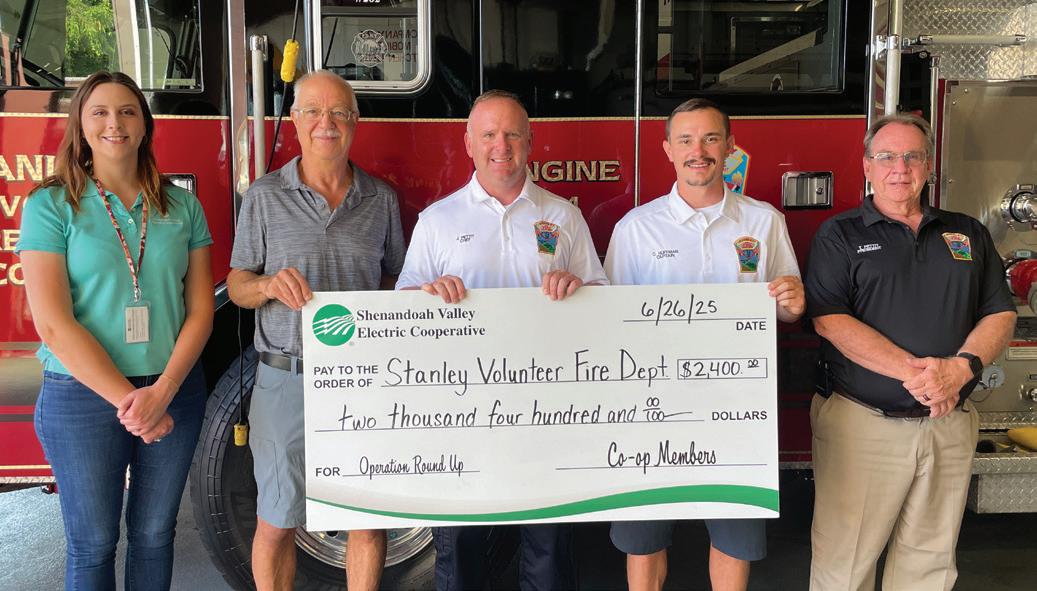
during summer programs, while also teaching them age-appropriate meal preparation.
• Page One: for financial assistance and food pantry programs.
• Stanley Volunteer Fire Department: to purchase three pagers, the primary notification method for emergency incidents with the county’s Emergency Communications Center.
ROCKINGHAM
• Silk Moth Stage: for theater workshops in schools and libraries, connected to the themes of its fall performance.
• Stone Haven: to purchase materials for its new residential treatment program supporting women in their journey of healing from sexual exploitation.
• Way to Go: to enhance and expand its transportation services for low-income working families and individuals in Harrisonburg and Rockingham County.
SHENANDOAH
• Community Resources for Education and Wellness: to further enhance the former Triplett School in Mount Jackson with additional programming, art supplies and a makerspace room.
• Ferst Readers: to purchase and mail books and literacy materials to children.
WINCHESTER/FREDERICK/CLARKE
• Faithworks: to fund a transportation assistance program to support households with car repair bills or other transportation-related expenses.
• Family Promise: to help parents pay for summer and/or after-school care for their children as part of its mission to serve those currently facing or at risk of homelessness.
• John H. Enders Fire Company & Rescue Squad: to purchase specialized water rescue tools to enhance response capabilities on the Shenandoah River and elsewhere. •

No Ordinary Game of Tag
Crews use highly sensitive setting to stay safe
by Preston Knight, Communication Manager
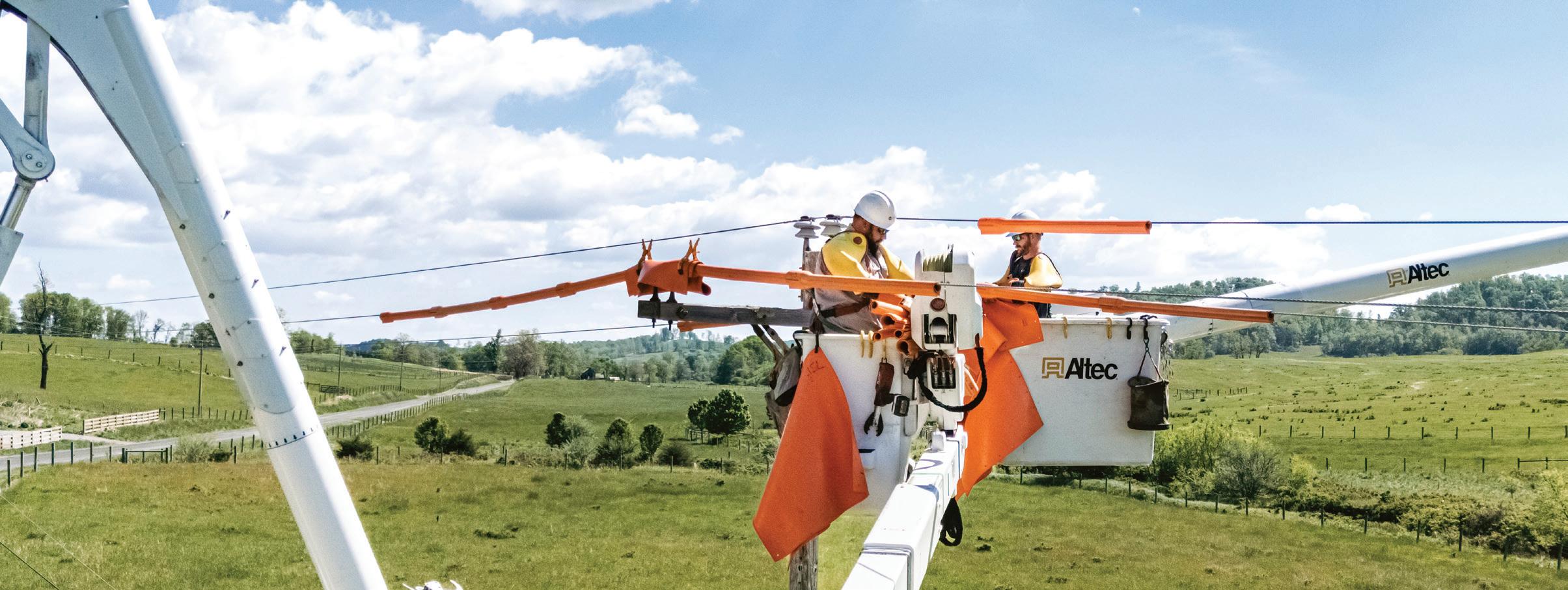
The next time you have a short service interruption or your lights flicker, a life may have just been saved.
When SVEC crews work with energized equipment, they coordinate with the operations center to initiate the hot-line tag process, a highly sensitive safety setting. By controlling the line in this manner, crews have the peace of mind to do their job without additional risk.
Hot-line tag detects any fault, including squirrels contacting co-op facilities.

“In the event of a fault, whether it is a squirrel contact or human contact, hot-line tag will de-energize the line in about 40 milliseconds,” Director of System Engineering Nathan Berry says. “This significantly reduces the amount of energy that a lineman would be subjected to in the event of an inadvertent contact or equipment failure while working hands on.
“Without hot-line tag it could take the line several seconds to de-energize, which would result in much higher energy and much higher danger and potential injury.”
For most of SVEC’s main lines, the hot-line tag process starts with the crew leader contacting operations, setting off a rather simple procedure for their workers’ safety.
“They will identify themselves, their work and the device they need hot-line
tag on,” Berry says. “Then the system operator navigates to that device in our system and, with a couple clicks of a mouse, hot-line tag is turned on.”
For tap lines — those that go to individual buildings or neighborhoods — the process is slightly different. The crew leader must drive to the device in the field, open the control box and push a button. The crew leader also communicates with system operators to let them know the device is on hot-line tag, Berry says.
Crew safety is the top priority when there is a job to do. The trade-off with hot-line tag, as Berry notes, is when any fault on the line occurs while hot-line tag is in operation. The line will de-energize until crews are verified safe and the line has been patrolled. A member may lose electricity or have blinking lights under these circumstances.
This has occurred on occasion in recent months as crews and a higher-
To protect workers, SVEC uses a hot-line process, a highly sensitive safety setting that will shut off electricity if a fault occurs on the line.
hot-line tag is often used for their safety.
“When the line is on hot-line tag, any fault causes the entire line to go out,” Director of Operations Support Bill Rees says. “An inconvenience, yes, but for safety reasons we need to have our protections set this way.”
Alternatives exist, such as de-energizing lines by backfeeding electricity from another location, to avoid the risk of members losing service or seeing blinking lights. Those options, however, are not always available.
“Backfeeding options depend on many factors like circuit compatibility, loading and switching device placement. In most cases, backfeeding would just shift the problem to another circuit,” Berry says. “If there is a significant amount of line that needs worked that has no member connections, then backfeeding can possibly help.”
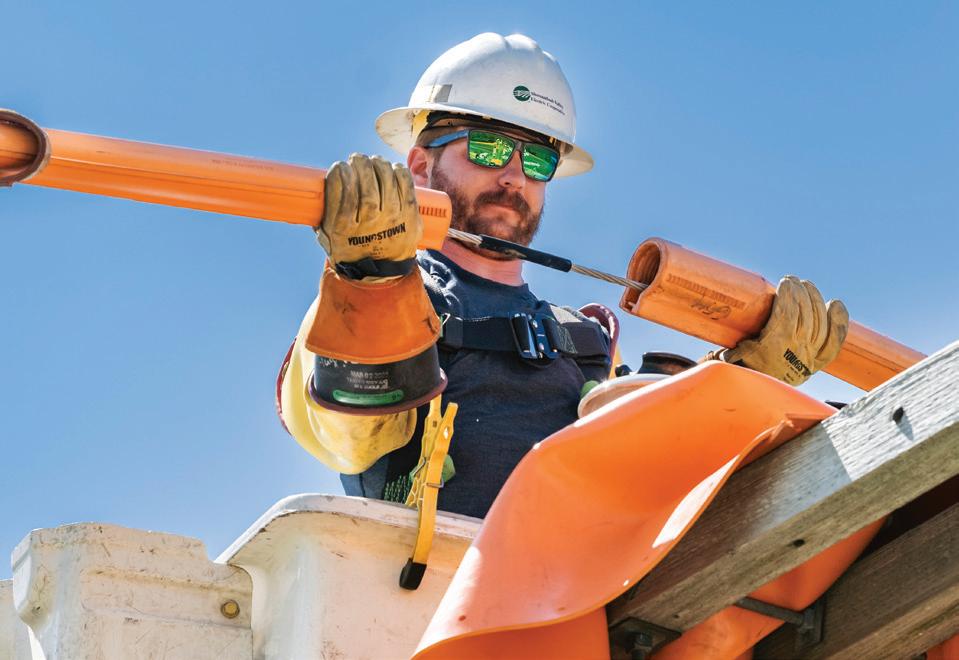
Hot-line tag is commonly used for crew safety, as is covering energized lines with insulated material.
than-usual number of contractors work on SVEC’s lines, for various reasons, and
Members who have an outage caused by a hot-line tag situation may notice it in the outage map, where “HLT” sometimes appears as part of a description explaining the cause of an issue. The electric industry is ripe with acronyms. Only one, though, can literally be a matter of life or death.
“The biggest downside to hot-line tag is it cannot distinguish between an animal contact and a human contact,” Berry says. “Our priority is to protect our workers. This is why we accept this downside.” •
Think Fast. And Green
.
JMU camp gives quick education on renewable energy
by Preston Knight, Communication Manager
Jmavien Wells wanted to take the electric truck for a spin, a vision of topping out at 140 mph.
He had been informed earlier that electric vehicles have some giddy up, so the idea of a fast ride was fresh. However, his dreams would have to remain elusive because, for starters, he’s only in middle school and driving would be illegal, but also the opportunity to explore the truck was only while it was stationary.
Everything else was as hands on and realistic as it could get as part of JMU’s renewable energy camp, a unique, week-long experience for about 20 area middle school students each summer.

“It’s fun and you get to learn new stuff,” Jmavien says.
When not looking to act like
boost. Through a national We Share Solar program, the suitcases will go to Africa, where electricity access is lacking. SVEC funded the purchase of several kits for a JMU camp in 2024.

Campers marvel at a Rivian electric truck during JMU’s renewal energy camp earlier this summer.
While that part of the program has a global impact, its true value mostly lies in what it provides for local students.
“We’re growing their awareness of renewable energy,” says Remy Pangle, managing director of JMU’s Center for the Advancement of Sustainable Energy. “This camp experience allows them to dig deeper than they might in a classroom.”
KEEPING IT REAL
The camp is unique to the Valley and, based on the number of requests Pangle receives to bring it elsewhere, the state as well. It explores topics that include wind and solar power and energy conservation and efficiency, teaching them in fun ways through hands-on tactics such as an energy carnival featuring sustainability-themed games.

constructing more retention ponds.
“It gives them a purpose to the week,” Pangle says.
A tour of JMU’s Engineering/ Geosciences building was another real-world application in which students were on the lookout for ways the university saved energy or perhaps could improve. Are computers plugged in and not in use? Are LEDs installed? What is the thermostat setting?
These are questions students can ask any day at home, too, as they become young advocates for energy efficiency and renewable energy among
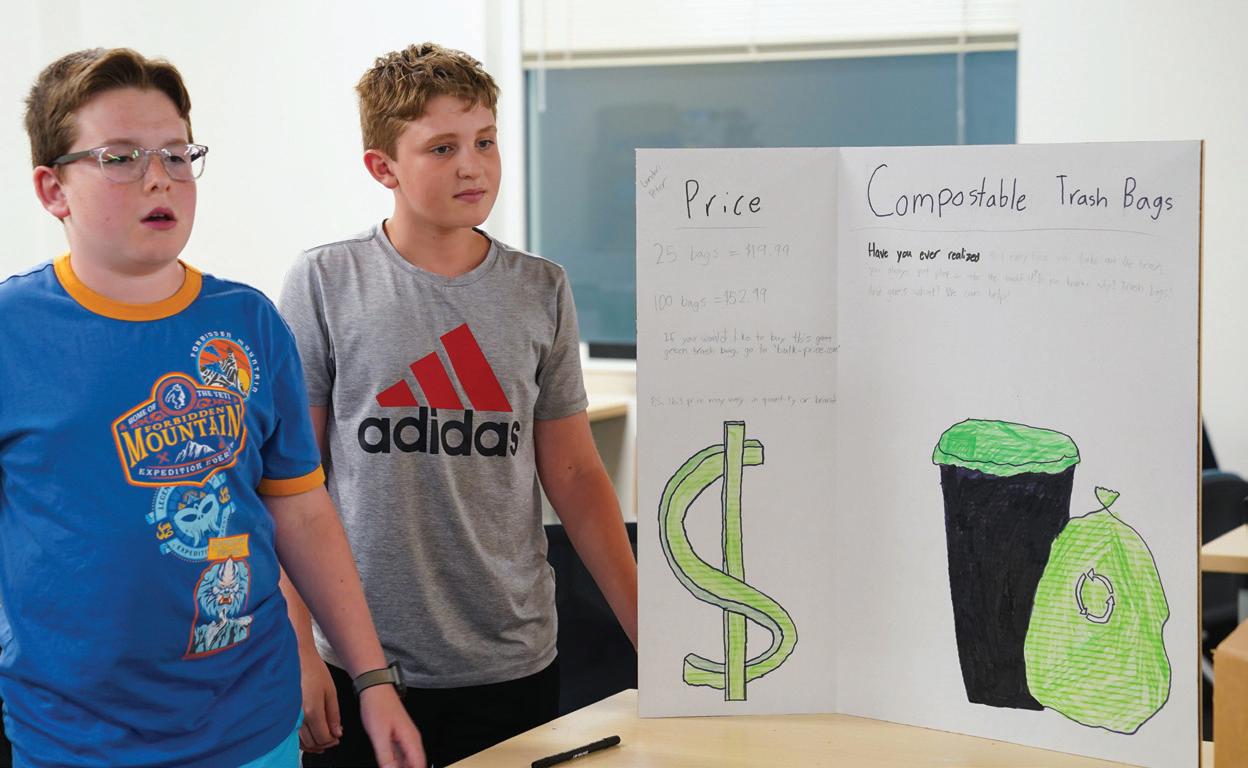
To give their week a greater purpose, campers worked on a presentation to pitch Massanutten Resort on ideas to achieve greater sustainability.
For the last three years, at week’s end, students presented to the sustainability team at Massanutten Resort. They offer suggestions to improve the property, such as a reward program for recycling or
their peers and even adults. Results may not always be immediate in turning the world into a more sustainable place, but not everything, as they learned, always moves at top speed.
“We want kids who are curious,” Pangle says. “They have many opportunities here to just fiddle with stuff. They really seem to enjoy the creative outlet.” •
